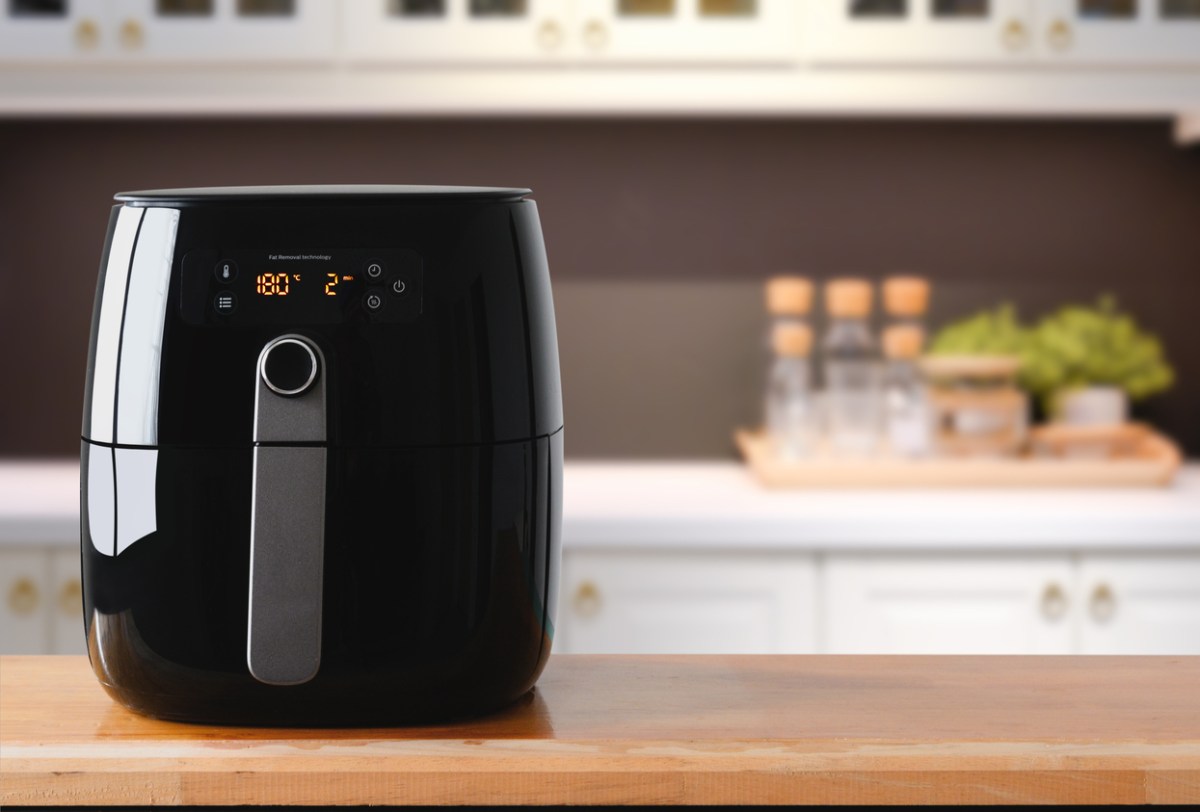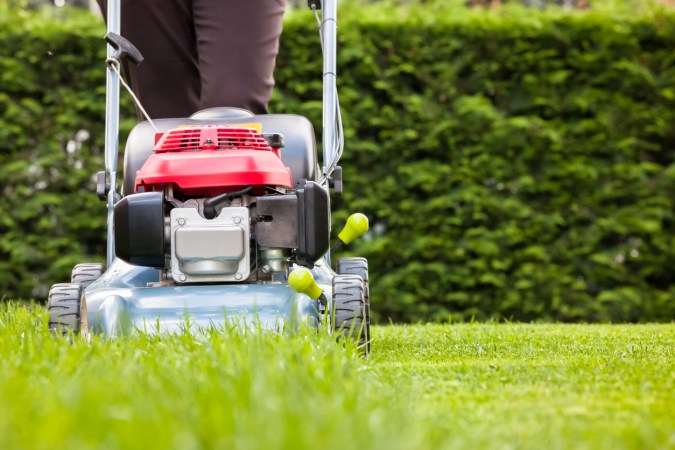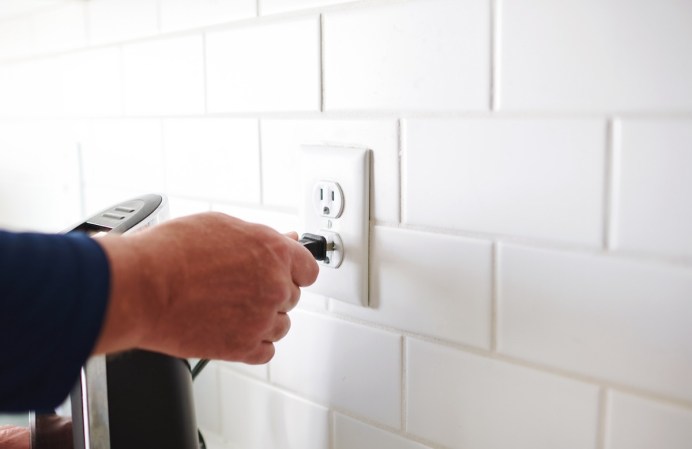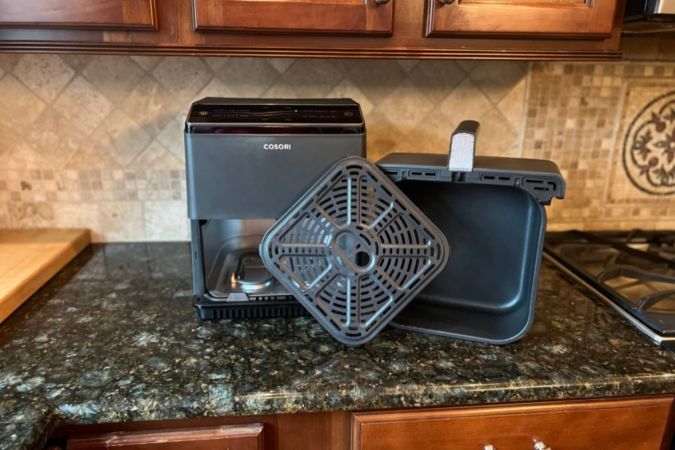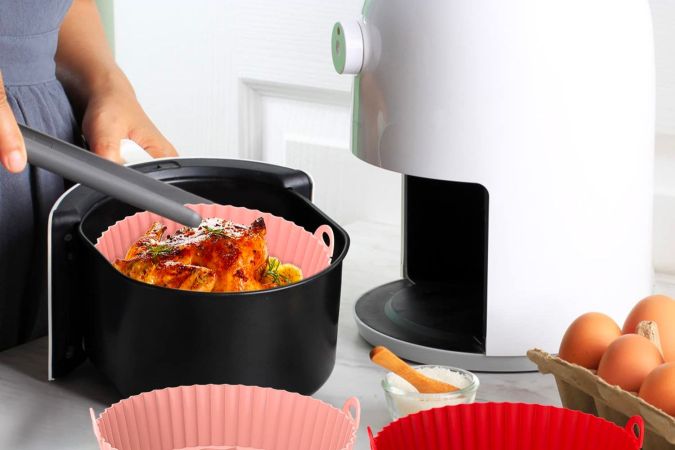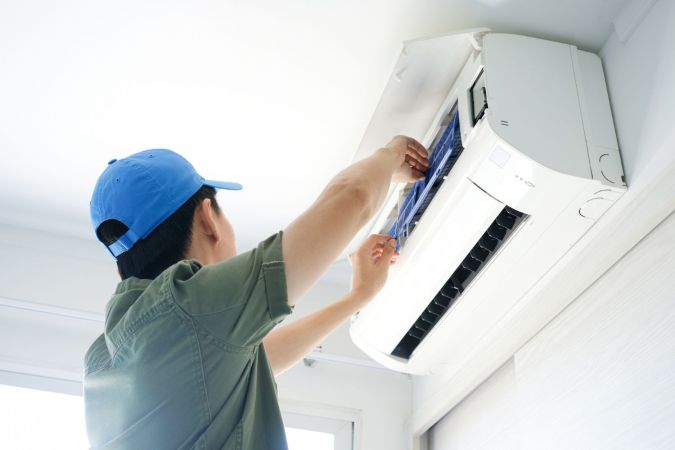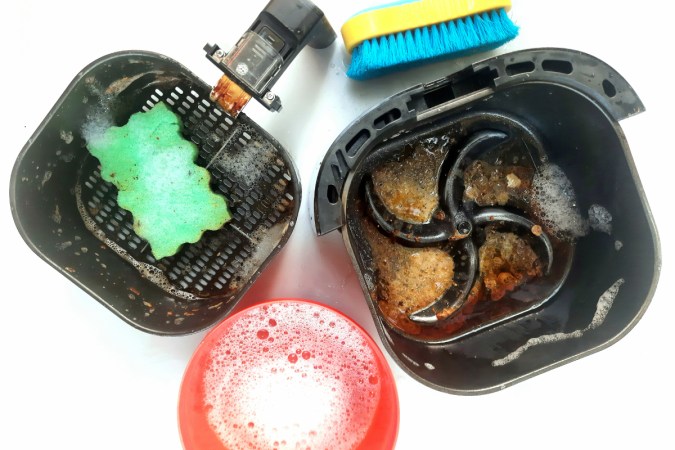We may earn revenue from the products available on this page and participate in affiliate programs. Learn More ›
Air fryers make it easy to cook perfectly crispy foods without turning on the oven. But they’re good for more than just crisping up “fried” chicken or reheating pizza. These small kitchen appliances can also be used to roast vegetables, bake cookies, and so much more. One of the advantages of using an air fryer is that it makes it possible to cook these various types of food without having to turn on your oven, reducing the amount of energy needed. The same is true for other small appliances, such as rice cookers, microwaves, pressure cookers, and more. Read on to learn just how much your air fryer and other small kitchen appliances can save you in energy usage and utility bills.
RELATED: The Best Air-Fryer Grill Combos
1. Air Fryers
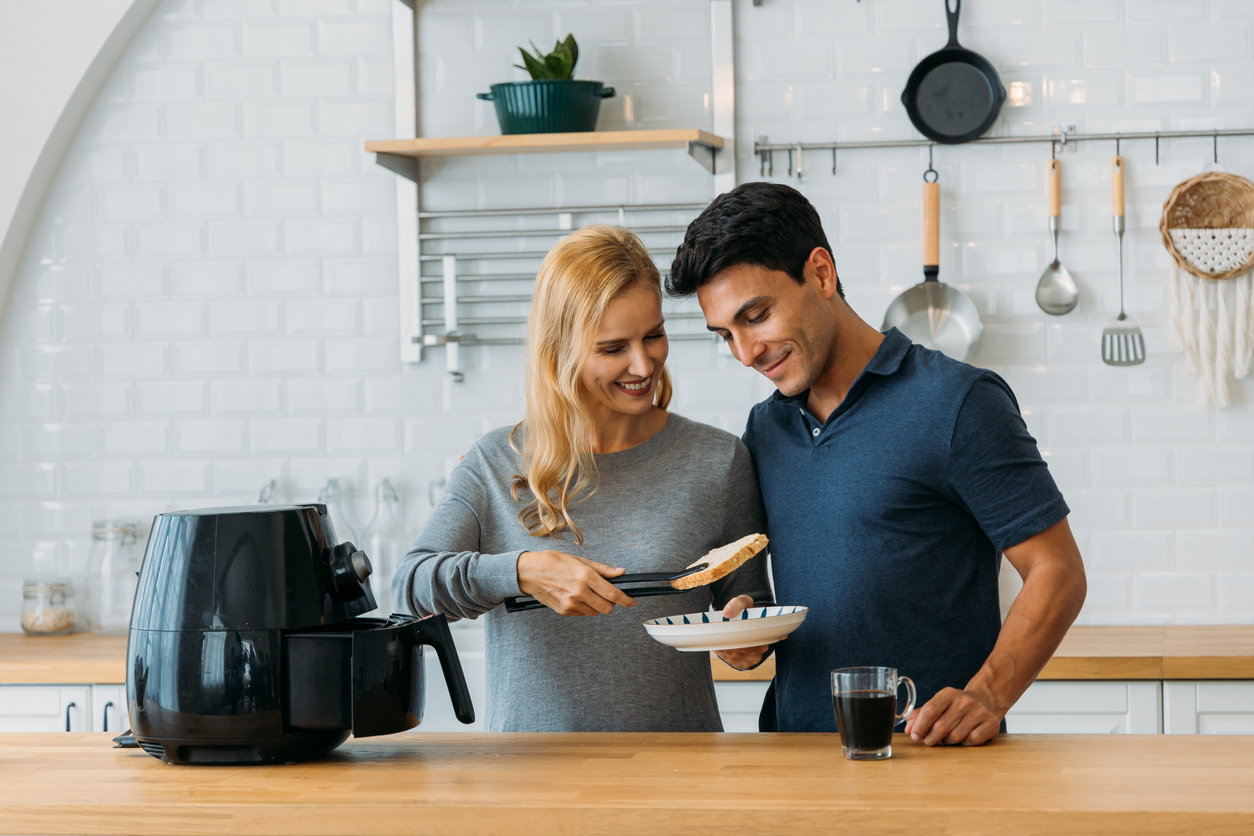
Using an air fryer is a good way to reduce your home’s energy consumption. An average air fryer requires 1,500 watts of power, compared to the 2,000 to 5,000 watts that an oven will need to cook foods. Moreover, because of their smaller size and convection technology that ensures more even heat distribution, air fryers cook food more quickly, further reducing energy usage.
As an example, cooking something in a 3,000-watt oven for 1 hour would consume 3 kilowatt-hours of electricity [(3,000 watts x 1 hour) ÷ 1,000]. Assuming that same item could cook in an air fryer in 30 minutes, it would use only 0.75 kilowatt-hours [(1,500 watts x 0.5 hours) ÷ 1,000]. Based on the national average utility cost of 17 cents/kilowatt-hour, it would cost 51 cents to operate the oven, compared to just 13 cents using the air fryer. To maximize your energy savings and avoid making double batches, be sure to purchase a larger air fryer, such as the Cosori Dual Blaze, if you have a lot of mouths to feed.
RELATED: 13 Air Fryer Accessories Every Home Chef Needs
2. Microwaves
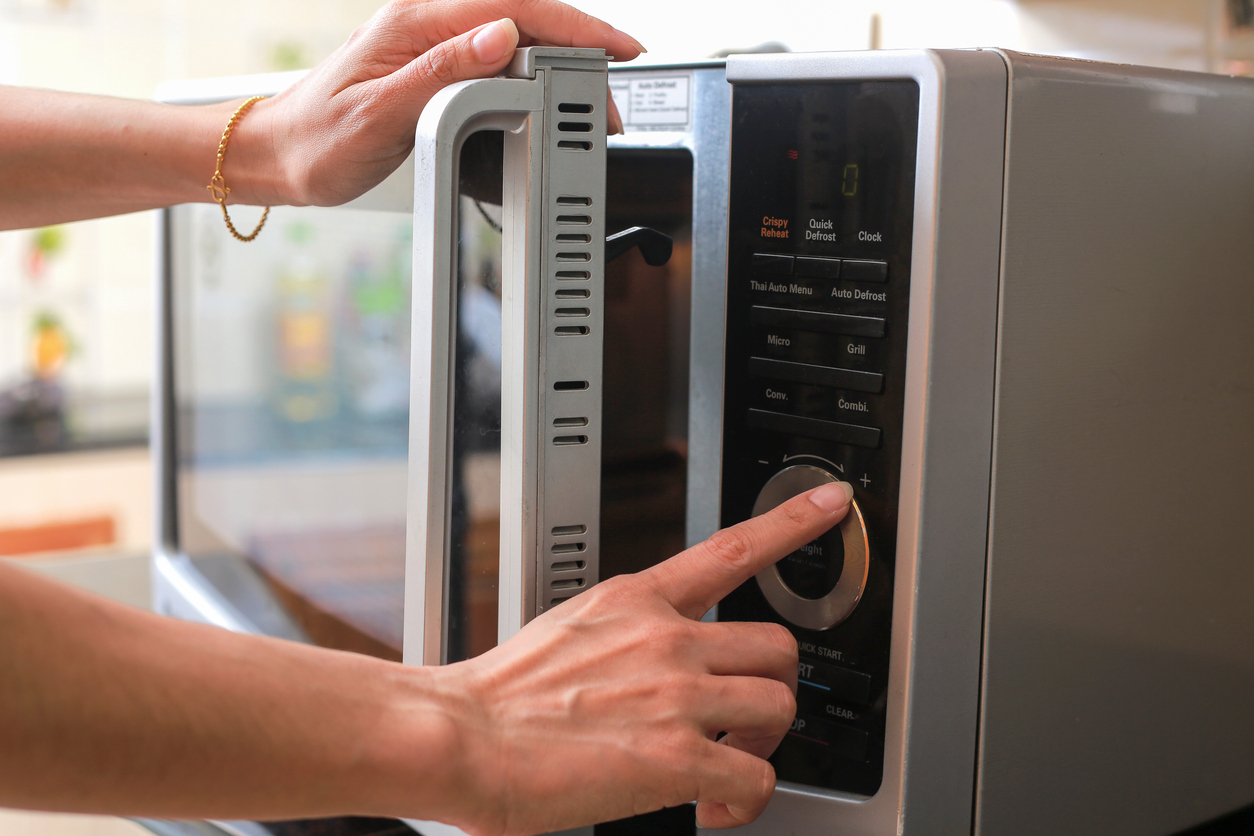
While the microwave can’t always replace the oven or stovetop, using it in their place when possible can help you reduce your home’s energy footprint. Most microwaves use between 600 and 1,000 watts, which is significantly less than the 2,000 to 5,000 watts most ovens require and the 1,200 to 3,000 watts that stovetop burners use.
Because microwaves can also reduce cooking times by up to 75 percent, the potential energy savings are significant. Take the same example shared above, where cooking something in the oven for 1 hour consumes 3 kilowatt-hours of electricity and costs about 51 cents. If the same item takes just 15 minutes to cook in the microwave, then you’d be consuming 0.25 kilowatt-hours of electricity [(1,000 watts x 0.25 hours) ÷ 1,000], which would come out to about 4 cents.
RELATED: The Best Smart Gadgets to Use in the Kitchen
3. Pressure Cookers
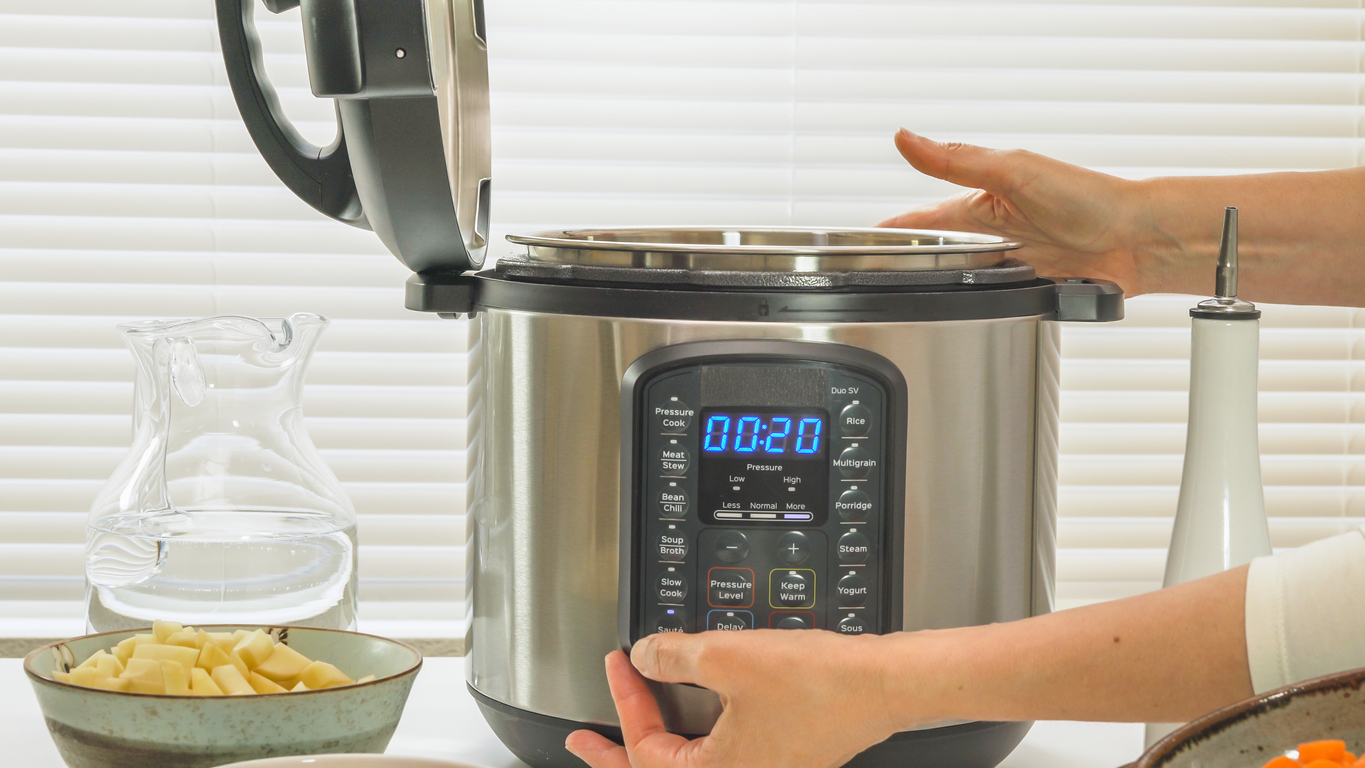
Pressure cookers like the Instant Pot are another small kitchen appliance that many home chefs swear by. If you have one or are considering purchasing one, you may be wondering whether it will actually help you save money. Well, chances are that it will. Keep in mind that a 6-quart pressure cooker draws about 1,000 watts.
An Instant Pot will cook most recipes in one-third to half the time the oven would take for the same meal. For example, if you’re making pulled pork, it will take about 60 minutes in the Instant Pot (plus a natural pressure release) or about 3 hours in the oven. Operating the Instant Pot would require 1 kilowatt-hour of electricity [(1,000 watts x 1 hour) ÷ 1,000], which would come to 17 cents using the national average utility cost cited above. Compare this to the $1.53 cost to run the oven for 3 hours and the 9 kilowatt-hours of electricity [(3,000 watts x 3 hours) ÷ 1,000] that would be required.
RELATED: Why Every Kitchen Needs an Appliance Garage—and 13 Stylish Organizational Ideas
4. Rice Cookers
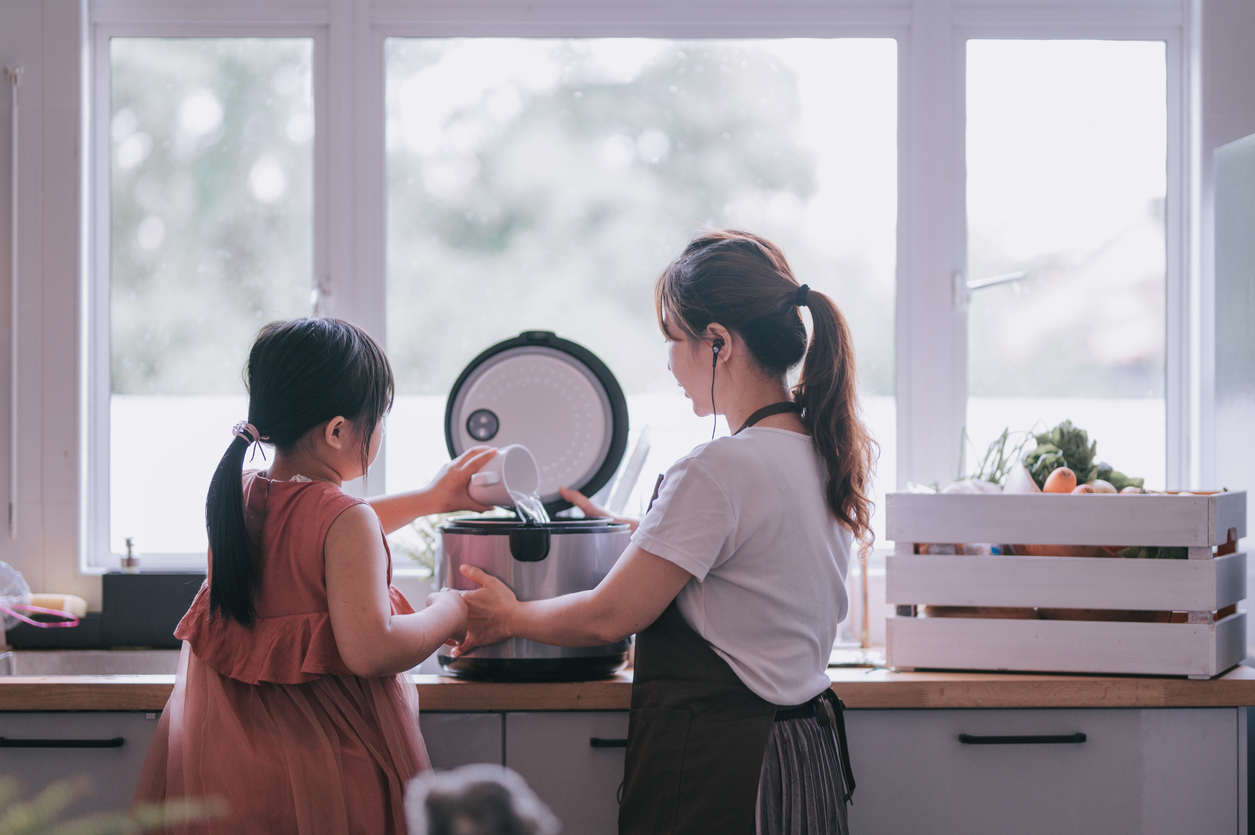
Most rice cookers only use about 700 watts of energy, which is just more than half of the 1,200 watts that some stovetop burners use and about one-fourth of the 3,000 watts that other burners use. Even if you’re comparing the rice cooker to a lower wattage burner, the energy savings will still add up.
Cooking rice takes about 30 minutes, regardless of whether you’re using a rice cooker or the stovetop. However, it will cost about 6 cents in the rice cooker compared to 10 cents on the stovetop. The rice cooker uses 0.35 kilowatt-hours of electricity [(700 watts x 0.5 hours) ÷ 1,000], while the stovetop requires 0.6 kilowatt-hours [(1,200 watts x 0.5 hours) ÷ 1,000]. Over dozens of pots of rice, these savings can add up.
RELATED: 10 Common Kitchen Appliance Mistakes Everyone Makes
5. Slow Cookers
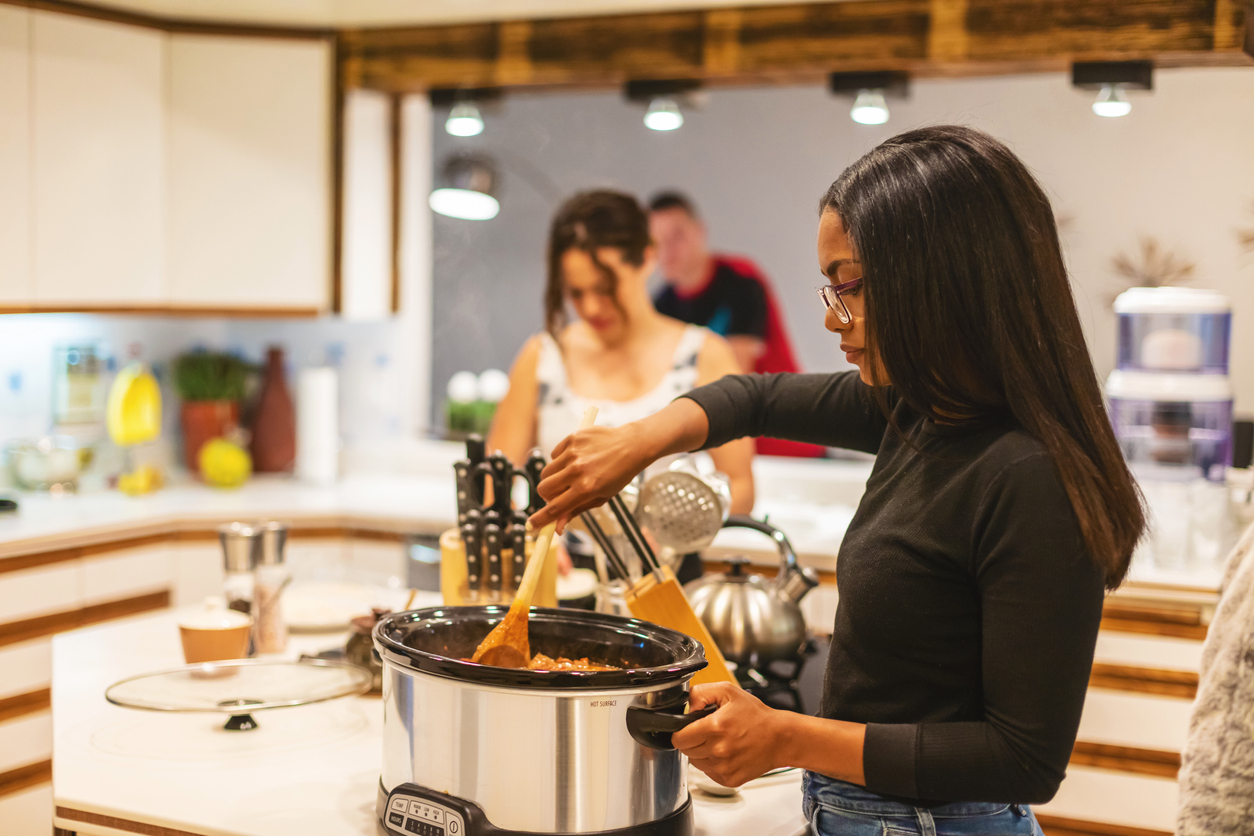
You may think that slow cookers are not that energy efficient since they run for hours at a time. However, because they use such low temperatures, they actually don’t require that much energy to run. Most need only 75 to 150 watts for a low setting and 150 to 210 watts for a high setting.
Consider cooking a pot roast in the slow cooker compared to cooking it on the stovetop. It would likely take about 8 hours in the slow cooker on a low setting or about 3 hours on the stovetop. The slow cooker would only consume 1.2 kilowatt-hours of electricity [(150 watts x 8 hours) ÷ 1,000], costing about 20 cents. If you were to cook the same pot roast on the stovetop, it would consume 3.6 kilowatt-hours of electricity [(1,200 watts x 3 hours) ÷ 1,000] and cost about 61 cents. In this example, the stovetop uses about three times as much energy as the slow cooker.

